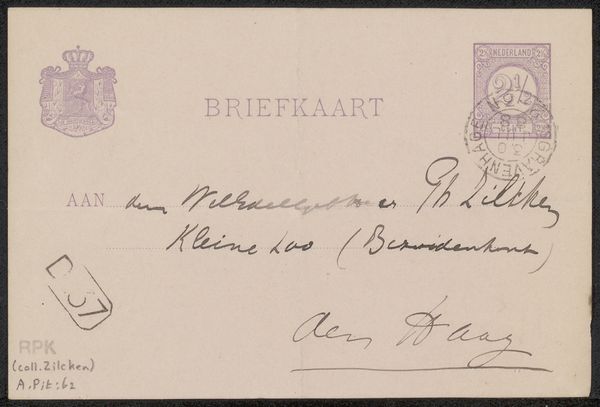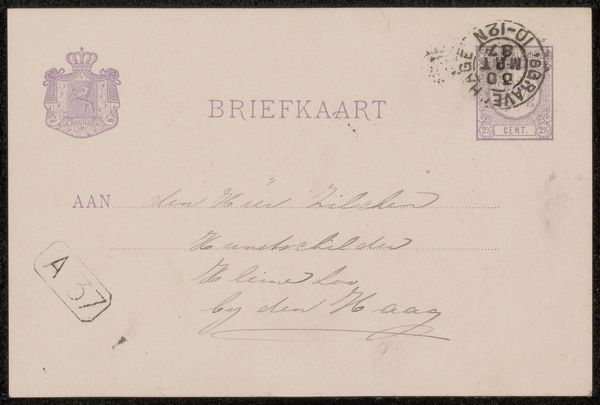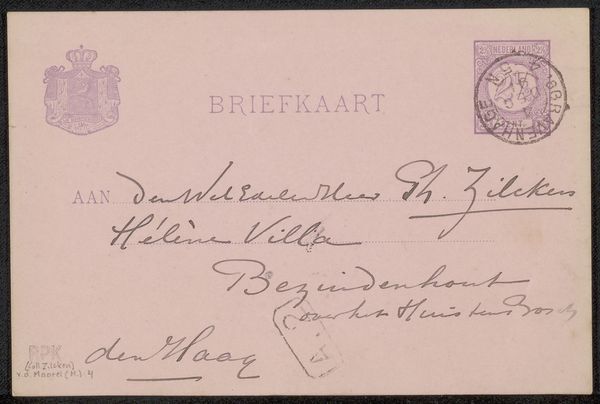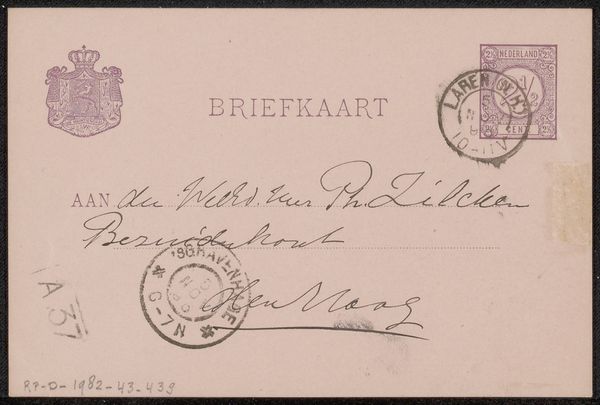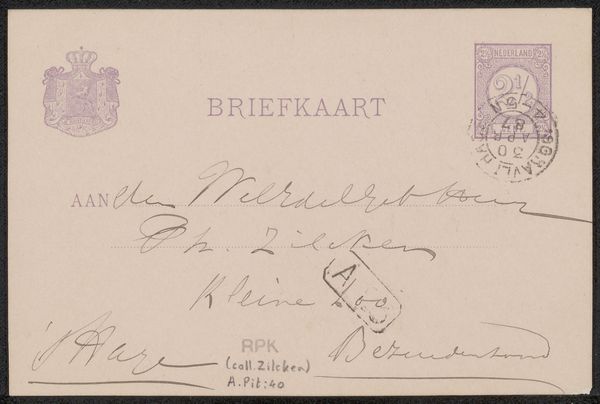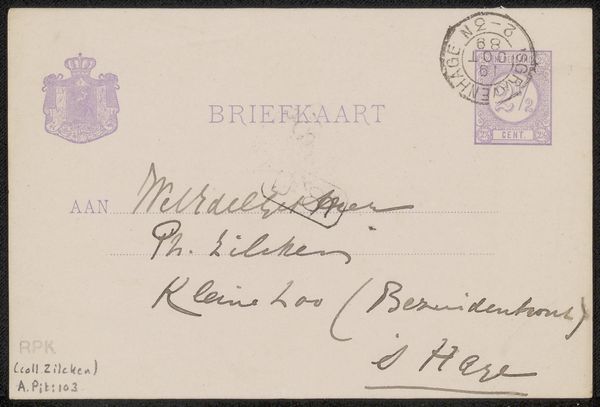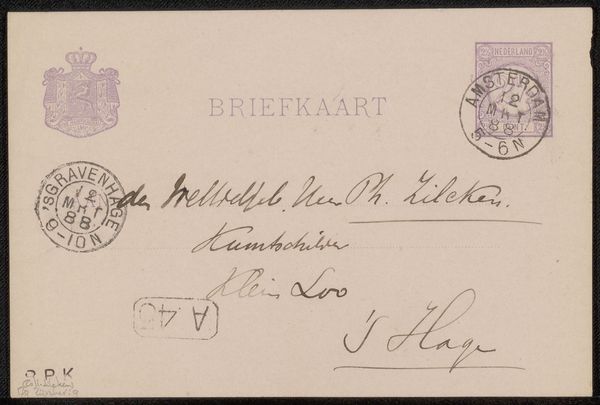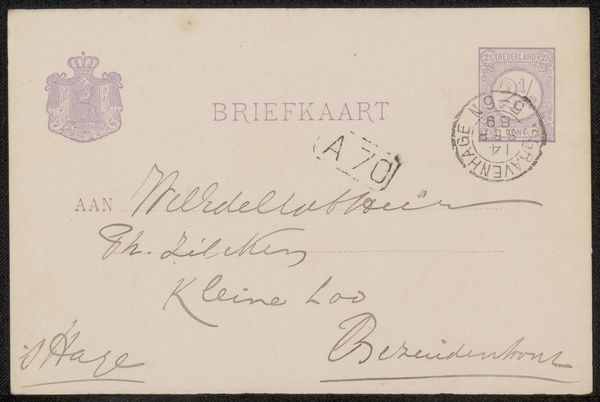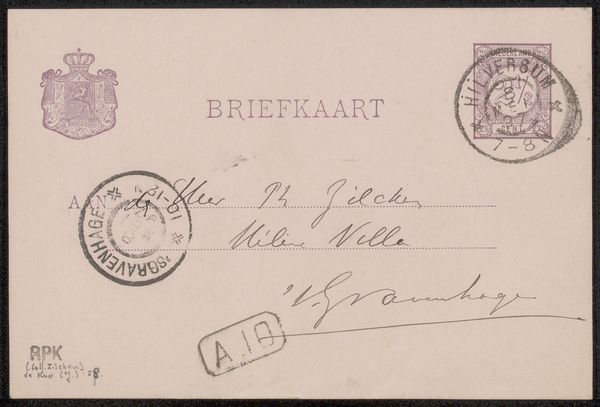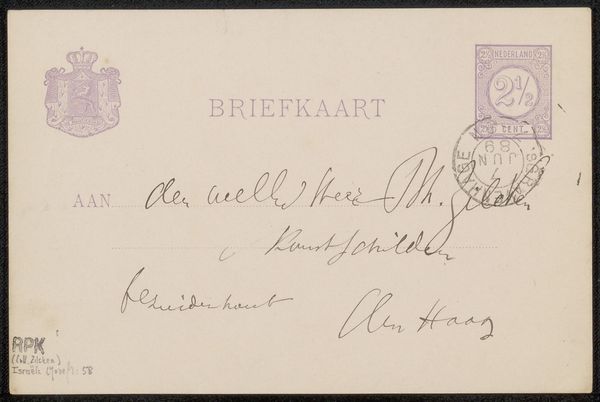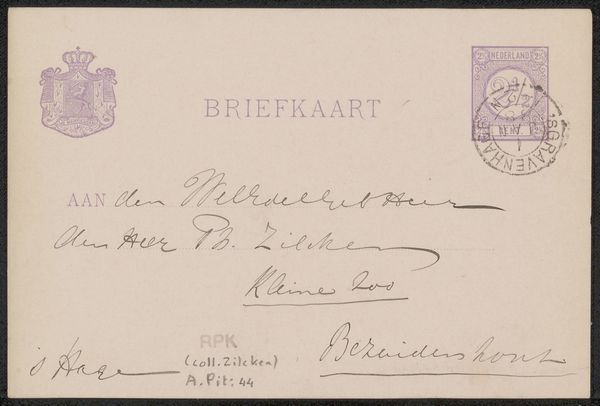
drawing, ink, pen
#
drawing
#
script typography
#
hand-lettering
#
old engraving style
#
hand drawn type
#
hand lettering
#
personal sketchbook
#
ink
#
hand-drawn typeface
#
pen work
#
sketchbook drawing
#
pen
#
handwritten font
Copyright: Rijks Museum: Open Domain
Curator: Looking at this piece, I’m immediately struck by its intimate, personal quality. It's almost ghostly, preserved across time. Editor: That's precisely it. Here we have "Briefkaart aan Philip Zilcken," or Postcard to Philip Zilcken, a drawing completed by Adriaan Pit sometime before 1888. It's a simple correspondence rendered with pen and ink, currently held in the Rijksmuseum collection. What really captures my interest is how an ostensibly mundane piece like this can be read as a subtle index of historical social practices. Curator: Indeed. I find myself pondering the kind of labor involved in such everyday communications during that era. Each flourish of the pen, each precisely formed letter – there’s a physicality that contrasts so sharply with our digitized communications today. The means of production here aren’t just about transmitting information, but also about cultivating and displaying skill and status. Editor: Precisely. And let’s consider the cultural context. Pit was corresponding with Philip Zilcken, situating both men within the Dutch art world of the late 19th century. Examining their relationships – perhaps of patronage, collaboration, or simple friendship – reveals broader social networks and power dynamics that shaped the art landscape. Curator: The very material tells us something too, the paper quality, the specific type of ink... all indicating the social class of the sender and the perceived value of the recipient, which offers an assessment of cultural capital being conveyed and acknowledged. Even the act of handwriting itself speaks of literacy and a specific mode of thinking, slow, considered, in contrast to our faster, more fluid, typing or dictating. Editor: And let’s not ignore the gendered implications, especially if this card carries sentiments beyond mere logistics. The emotional labor of writing, the cultivated script – they all construct identities within a very specific social performance. Who are these men, what were their lived experiences, what power structures were at play between them? Curator: It’s fascinating to consider how such a humble piece – a mere postcard, really – holds so many threads connecting process, skill, material reality and lived relations in society at large. It calls to mind not just an individual transaction, but entire systems of value. Editor: Yes, a single note opens a wider understanding of lives intertwined with a broader community that touches economics, art, and personal interaction. Thanks for the insight! Curator: My pleasure; together we extracted quite the picture from an otherwise 'simple' postal card.
Comments
No comments
Be the first to comment and join the conversation on the ultimate creative platform.

